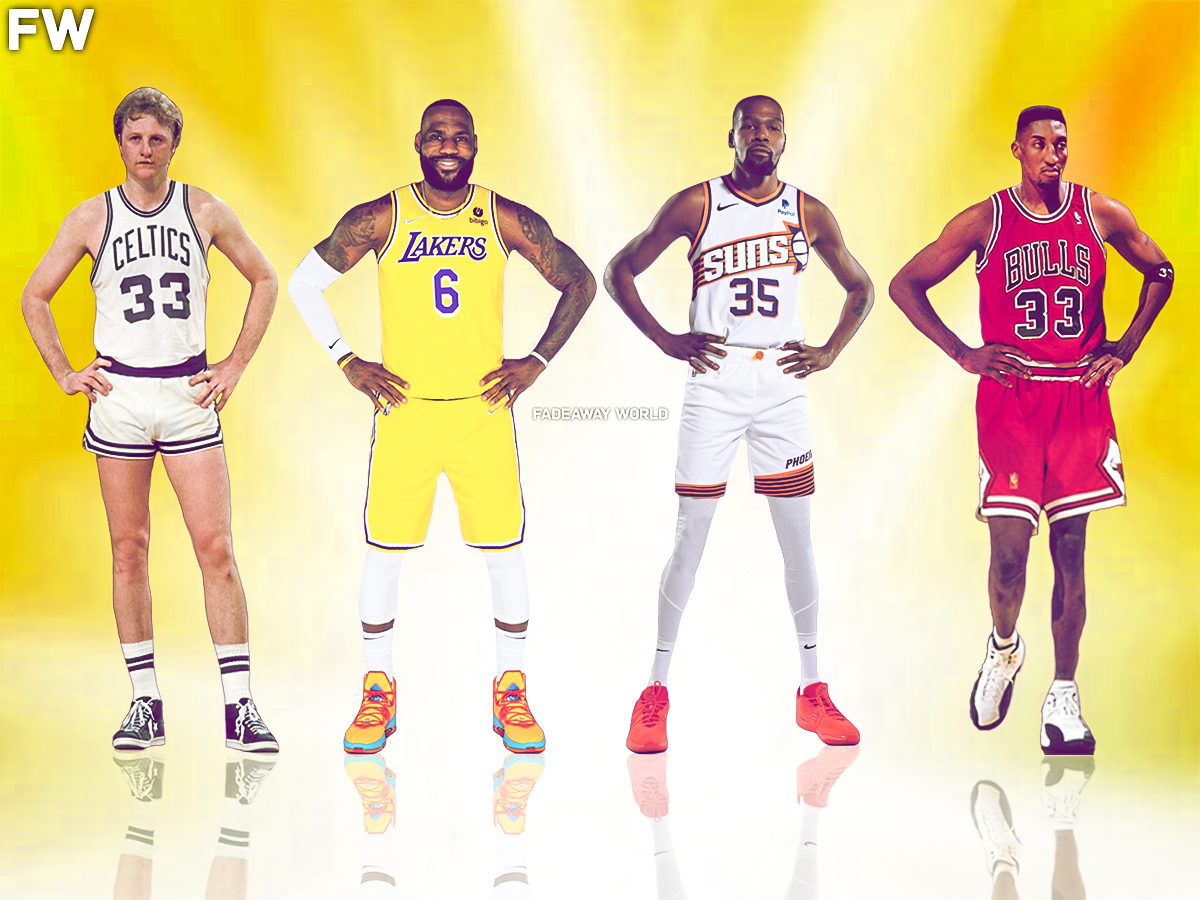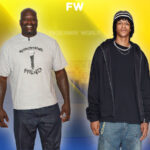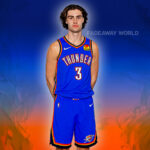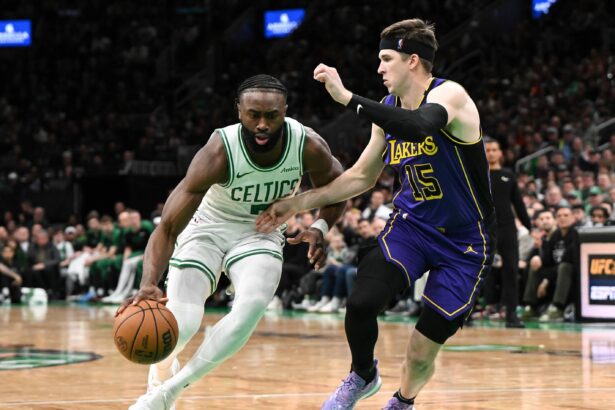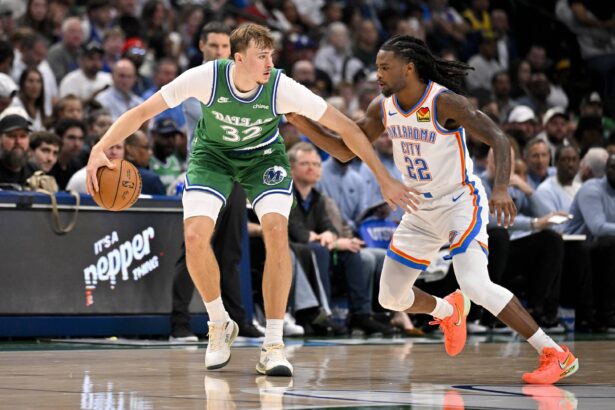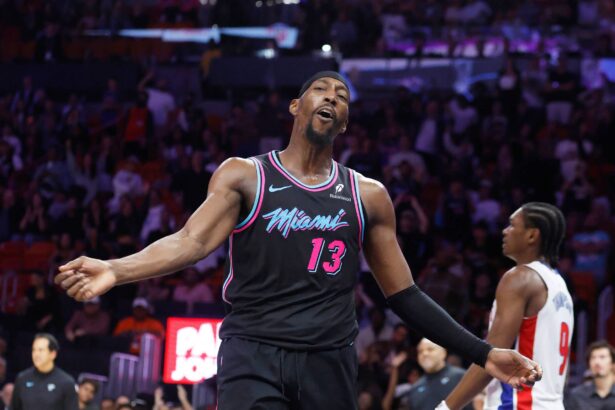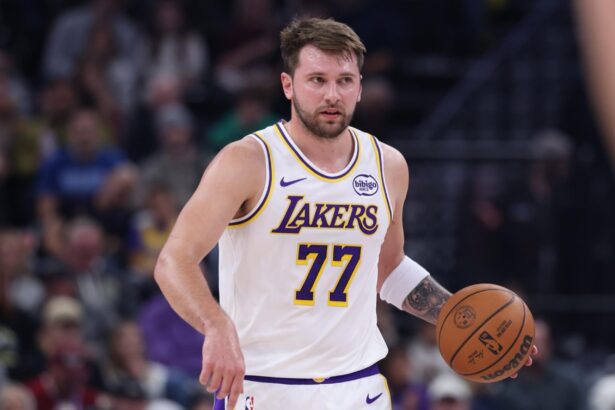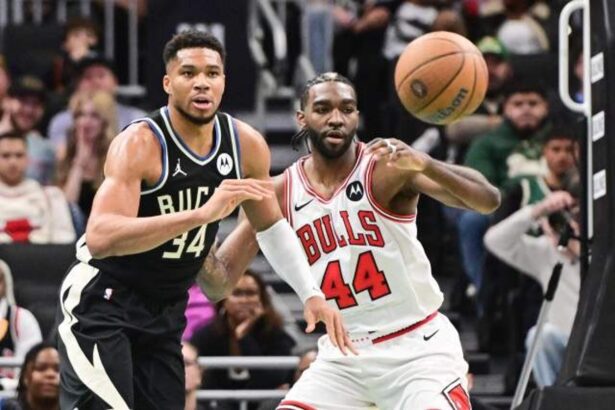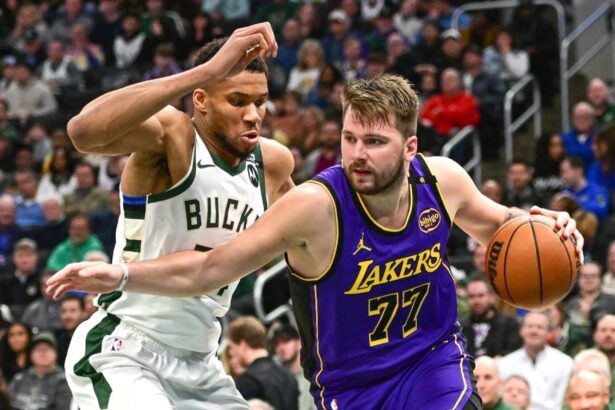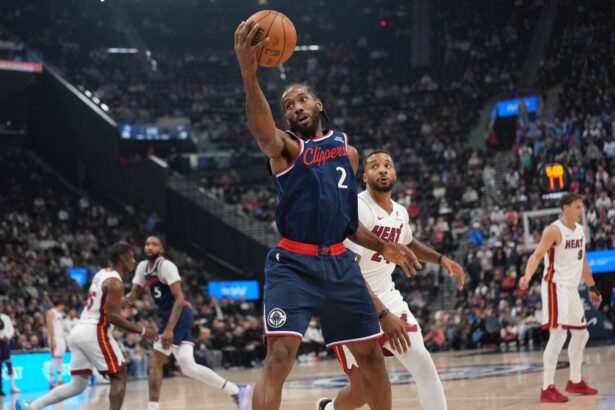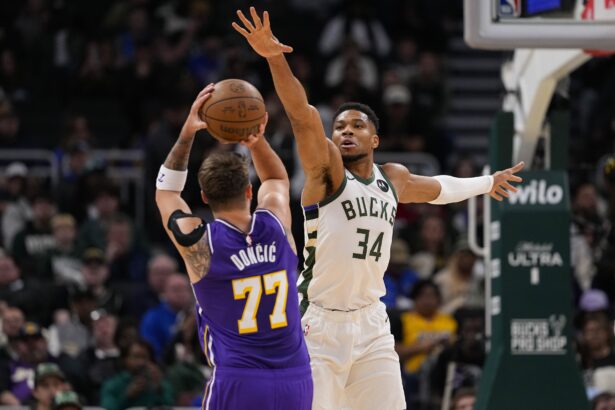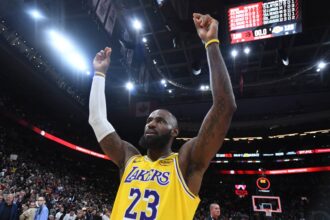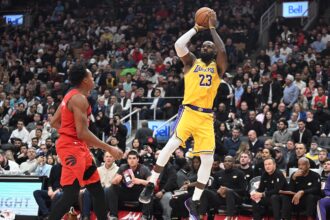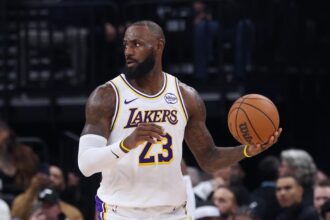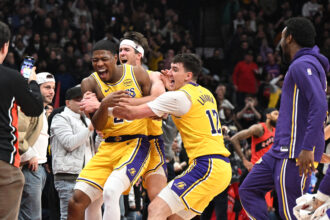In recent weeks, we have traveled through the annals of NBA history, covering the five greatest players from every position for that decade. We began with the point guards from Oscar Robertson in the 1960s to Stephen Curry in the 2010s. We then moved on to the shooting guards, such as 10-time NBA champion Sam Jones in the NBA’s early days to Michael Jordan and Kobe Bryant, who ushered in new eras of basketball.
- The 5 Greatest Small Forwards Of The 1950s
- The 5 Greatest Small Forwards Of The 1960s
- The 5 Greatest Small Forwards Of The 1970s
- The 5 Greatest NBA Small Forwards Of The 1980s
- The 5 Greatest Small Forwards Of The 1990s
- The 5 Greatest Small Forwards Of The 2000s
- The 5 Greatest Small Forwards Of The 2010s
- The 5 Greatest Small Forwards Of The 2020s
After covering these two positions, it is time to move on to cover one of the most talented spots on the court in NBA history, the small forward position. From Elgin Baylor to Julius Erving to Larry Bird to LeBron James, elite talent has occupied small forwards for as long as the NBA has been an organization. Now, it is time to see which players at small forward helped mold the NBA with their greatness, evolving every step of the way into the league it is today.
For those of you who are unfamiliar with how we break down each decade, it is as follows:
1950-1959
1960-1969
1970-1979
1980-1989
1990-1999
2000-2009
2010-2019
2020-Present
These are the 5 greatest small forwards in NBA history by decade.
The 5 Greatest Small Forwards Of The 1950s
1. Paul Arizin
2. George Yardley
3. Jack Twyman
4. Fred Schaus
5. Cliff Hagan
Back in the early days of the NBA, the small forward position, just like every position at the time, had limited star power thanks to only 8-10 teams in the league for any given season. During the 1950s, nobody dominated from the small forward position like Paul Arizin of the Philadelphia Warriors. Even after taking 1953 and 1954 off to serve in the U.S. Marines, Arizin was a 10-time All-Star, four-time All-NBA Team selection, !951 Rookie of the Year, and a two-time scoring champion. He averaged 22.8 points per game for his career and led the Warriors to their first championship in 1956.
Following Arizin for the 1950s decade are George Yardley and Jack Twyman. Yardley played six seasons from 1954 through 1959 with the Fort Wayne Pistons and Syracuse Nationals. During this time, Yardley became a five-time All-Star and two-time All-NBA selection averaging 19.0 points and 9.1 rebounds per game. As for Twyman, he played four seasons during the 1950s for the Rochester/Cincinnati Royals. He earned three All-Star selections averaging 18.4 points and 6.7 rebounds per game on 43.2% shooting.
Finally, coming in at the fourth and fifth spot are Fred Schaus and Cliff Hagan. Schaus is a relatively unknown name to the casual NBA fan but he was a serious threat at small forward during the 1950s. He played only five seasons from 1950 through 1954. He averaged 12.2 points and 6.0 rebounds per game during that time for the Fort Wayne Pistons with one All-Star and one All-NBA Team selection. Cliff Hagan would help the Hawks win the 1958 NBA championship over Bill Russell’s Celtics averaging 27.7 points and 10.5 rebounds per game in the playoffs.
The 5 Greatest Small Forwards Of The 1960s
1. Elgin Baylor
2. John Havlicek
3. Cliff Hagan
4. Jack Twyman
5. Chet Walker
When moving on to the 1960s, we begin to get introduced to some of the greatest players to ever play the small forward position. The first of them was Elgin Baylor who made his NBA debut in 1959 with the Lakers and remained with the team through the 1972 season. During the 60s, Baylor was spectacular with Minneapolis/Los Angeles, averaging 28.1 points, 13.8 rebounds, and 4.3 assists per game over 10 seasons. He earned nine All-Star and nine All-NBA First Team selections during this stretch as well while setting numerous playoff and NBA Finals scoring records that still exist today.
John “Hondo Havlicek” and Cliff Hagin take the second and third spots for the 1960s. Havlicek played seven seasons with the Celtics during the 60s, winning six NBA championships. Havlicek would also earn four All-Star selections, four All-NBA Team selections, and one All-Defensive Team selection during this time. Hagan continued his dominance of the rest of the league alongside superstar teammate Bob Pettit. Hagan would earn four more All-Star selections averaging 18.2 points and 6.1 rebounds per game.
The final two small forwards in the top five for this era are Jack Twyman once again and Chet Walker. For Twyman, he would play seven more seasons with the Royals during the 1960s before retiring in 1966. He would earn three more All-Star selections and two All-NBA Team selections averaging 19.7 points and 6.5 rebounds per game. Chet Walker gets the fifth spot for what he did as a member of the 76ers from 1963 through 1969. During this time, Walker was a three-time All-Star who averaged 16.2 points and 1.9 rebounds per game.
The 5 Greatest Small Forwards Of The 1970s
1. Julius Erving
2. John Havlicek
3. Rick Barry
4. Bob Dandridge
5. John Drew
The 1970s is when the overall talent at small forward began to skyrocket, starting with one of the most influential players in NBA history, Julius Erving. Also known as “Dr. J”, Erving was a high-flying athletic monster in the 1970s who changed the game with his dominance in both the ABA and NBA during the 1970s. With the Virginia Squires, New York Nets, and Philadelphia 76ers, he averaged 26.2 points, 10.4 rebounds, 4.5 assists, 2.1 steals, and 1.7 blocks per game. He won three MVP awards in the ABA as well as two championships before joining the 76ers with the merger in 1976.
John “Hondo” Havlicek continued to play at an elite level during the 1970s as well. He led the Celtics to two more championships with Finals MVP honors in 1974. He also earned seven more All-NBA and All-Defensive Team selections through 1978. Rick Barry was another ABA/NBA product of the 1970s who accomplished the highest highs in both leagues. He averaged 24.4 points, 6.3 rebounds, 5.4 assists, and 2.1 steals per game in the decade with an NBA title and Finals MVP with the Warriors in 1975.
Bob Dandridge was underrated for most of his career but his play during the 1970s deserves some recognition. From 1970 through 1979 with the Bucks and Bullets, he averaged 19.0 points, 7.1 rebounds, and 1.4 steals per game. He won championships with Milwaukee in 1971 as well as Washington in 1978. John Drew is the 1970s’ final small forward for his play with the Hawks from 1975 through 1979. In these five seasons, he averaged 22.0 points, 8.5 rebounds, and 1.6 steals per game with one All-Star selection.
The 5 Greatest NBA Small Forwards Of The 1980s
1. Larry Bird
2. Julius Erving
3. Dominique Wilkins
4. Alex English
5. Bernard King
The 1980s was truly an elite era for the small forward position highlighted by one player who helped save the NBA, Larry Bird. Bird’s rivalry with Lakers guard Magic Johnson is one of sports’ greatest rivalries and the foundation for some great basketball during the 80s. Bird would lead the Celtics to three NBA titles with two Finals MVPs in 1984 and 1986. From 1984 through 1986, Bird would be the last player in NBA history to win three straight MVP awards and averaged 25.0 points, 10.2 rebounds, 6.1 assists, and 1.8 steals per game for the entirety of the 1980s.
Julius Erving was still as dominant as ever as well. During the 1980s with the Sixers, Erving would help them capture an NBA championship in 1983 and win an MVP award in 1981. From 1980 through 1987, he averaged 22.0 points, 6.4 rebounds, 1.8 steals, and 1.6 blocks per game. Dominique Wilkins was yet another electric athlete to play small forward for the Hawks during the 1980s. Wilkins, Bird, and Erving had their share of fiery battles during the decade. Wilkins averaged 26.0 points, 6.8 rebounds, and 1.5 steals per game from 1983 through 1989 with multiple 30.0 points per game seasons.
Alex English scored more points than any player during the 1980s in the NBA with the Denver Nuggets. He averaged 25.9 points per game on 51.0% shooting at this time and had eight straight 2,000-point seasons from 1982 through 1989. The final small forward for the 19900s is none other than Bernard King. We could have easily gone with Adrian Dantley here as well but King gets the nod for 10 years of greatness with the Jazz, Warriors, Knicks, and Bullets.
The 5 Greatest Small Forwards Of The 1990s
1. Scottie Pippen
2. Grant Hill
3. Dominique Wilkins
4. Chris Mullin
5. Glen Rice
The 1990s is when we enter what many consider to be one of the greatest eras of basketball. Of course, Scottie Pippen is the greatest small forward of the decade for what he gave the Chicago Bulls on both sides of the ball. Pippen helped lead Chicago to all six of their NBA championships alongside Michael Jordan. He also earned seven All-NBA Team selections and nine All-Defensive team selections during the decade averaging 19.2 points, 7.2 rebounds, 5.9 assists, and 2.2 steals per game.
Before injuries derailed his career, Detroit Pistons forward Grant Hill was well on his way to becoming the next face of the NBA. In five seasons from 1995 through 1999, Hill was a four-time All-Star and four-time All-NBA Team selection as well as the 1995 Rookie of the Year. Carrying over his success from the 1980s was Dominique Wilkins In six full seasons with the Hawks, Clippers, and Celtics in the 1990s, Wilkins remained one of the game’s top small forwards with 25.5 points, 6.9 rebounds, and 1.2 steals per game even remaining a deadly offensive weapon after suffering a near-career-ending Achilles tear.
Rounding out the position for the 1990s are Chris Mullin and Glen Rice. Mullin spent eight seasons with the Warriors in the 1990s and two with the Pacers. With the Warriors, Mullin would be a four-time All-Star who averaged 22.3 points, 5.1 rebounds, 4.0 assists, and 1.8 steals per game on 51.7% shooting. As for Glen Rice, he was as deadly of a three-point shooter as any player is today with the Heat, Hornets, and Lakers during the 90s. He averaged 20.2 points and 4.7 rebounds on 45.9% shooting overall and 40.5% shooting from three from 1990-1999.
The 5 Greatest Small Forwards Of The 2000s
1. LeBron James
2. Paul Pierce
3. Carmelo Anthony
4. Shawn Marion
5. Peja Stojakovic
The 2000s was another elite era when it came to small forwards, especially two-way small forwards that impacted both sides of the floor. LeBron James began his reign as King during the 2000s for six seasons from 2004 through 2009. During that time, he would capture an MVP award in 2009 and lead the Cavaliers to their first Finals appearance in 2007. James was only getting started with five All-Star selections, five All-NBA Team selections, and one All-Defensive Team selection.
Paul Pierce is one of the most clutch performers from the small forward position in NBA history. During the 2000s with the Celtics, Pierce would average 23.3 points, 6.3 rebounds, and 4.3 assists per game in the decade. In 2008, he would lead the Celtics to their first NBA title since 1986 and take home Finals MVP honors. Carmelo Anthony was one of the greatest offensive weapons of the decade as well as a three-level dominant scorer. In the 2000s with Denver, he averaged 24.2 points and 6.1 rebounds per game on 46.0% shooting.
To wrap up the 200s, we have two extremely underrated players to take the fourth and fifth spots. First, is versatile small forward Shawn Marion who was the unsung hero of the 200s Suns. Marion was a four-time All-Star and two-time All-NBA Team selection in the 2000s with Phoenix. Peja Stojakovic was known for his clutch ability as well as his prowess from the three-point line. For the Kings and Hornets in the 2000s, he averaged 18.4 points and 5.0 rebounds per game on 45.7% shooting overall and 40.6% from three.
The 5 Greatest Small Forwards Of The 2010s
1. LeBron James
2. Kevin Durant
3. Kawhi Leonard
4. Paul George
5. Carmelo Anthony
LeBron James continued his dominance at the small forward position into the 2010s. In 2010, he capped off his time with the Cavaliers with another MVP award. From 2011 through 2014 with the Miami Heat, James would go to four straight NBA Finals, win two NBA titles, win two MVP awards, and win two Finals MVP awards. From 2015 through 2018, he would lead the Cavaliers to four straight NBA Finals as well with one more championship in 2016 in one of the biggest NBA playoff upsets ever. In total, James would go to eight NBA Finals in the decade and win four NBA championships.
Kevin Durant and Kawhi Leonard were easily the two greatest small forwards of the decade after James. Durant would win four scoring titles and an MVP award from 2010 through 2016 with the Oklahoma City Thunder. After joining the Warriors in 2016-17, Durant would win two NBA titles and two Finals MVP awards. For Leonard, the decade started with the Spurs where he won 2014 Finals MVP honors and back-to-back Defensive Player of the Year awards. In 2019, Leonard would finish the decade with the Toronto Raptors when he led them to their only title in franchise history and take home his second Finals MVP award.
Paul George and Carmelo Anthony were the next two greatest small forwards of the decade. With the Pacers and Thunder during the 2010s, George would average 19.8 points, 6.4 rebounds, and 1.8 steals per game with six All-Star selections, five All-NBA Team selections, and four All-Defensive Team selections. For Anthony, the majority of the 2010s would be spent with the Knicks averaging 23.9 points and 6.8 rebounds per game.
The 5 Greatest Small Forwards Of The 2020s
1. LeBron James
2. Kevin Durant
3. Jimmy Butler
4. Jayson Tatum
5. Kawhi Leonard
As it stands right now with three-plus seasons complete, LeBron James is still the greatest small forward in the NBA. In 2020, he captured his fourth NBA title with his third different franchise, the Los Angeles Lakers. He also claimed his fourth Finals MVP award in the process. In 2023, James became the all-time leading scorer in NBA history, passing Kareem Abdul-Jabbar after 38 years atop the list.
Kevin Durant and Jimmy Butler are the next two players on the 2020s small forward hierarchy. Durant remains one of the most lethal offensive options in the NBA, splitting time with the Nets and Suns averaging 29.0 points per game on 53/41/90 shooting splits. With the Miami Heat, Jimmy Butler has been able to lead them to two NBA Finals appearances since 2020 as well as three appearances in the Eastern Conference Finals.
Jayson Tatum is one of the NBA players right now who is heading toward becoming the next face of the NBA. Since 2020, he too has led his Boston Celtics squad to an NBA Finals appearance in 2022 as well as two other appearances in the Eastern Conference Finals. Bringing up the rear is Kawhi Leonard who, despite missing a ton of time on the court, has been the catalyst for the Clippers’ most successful season ever in 2021 as well as title hopes that continue in 2023-24.

